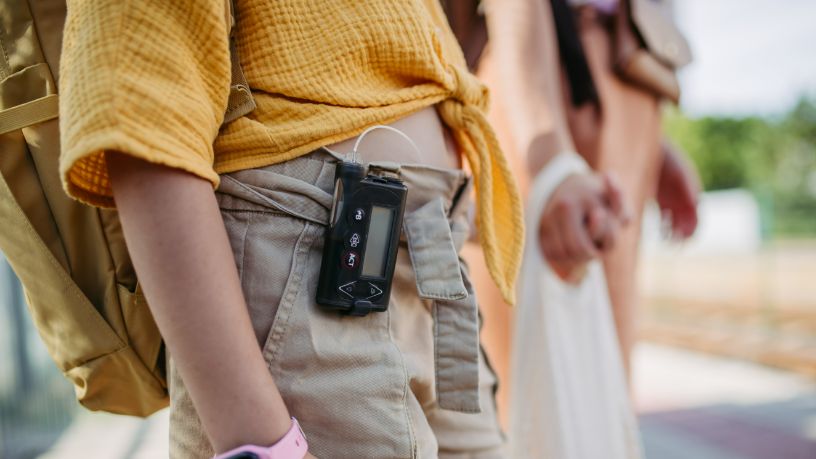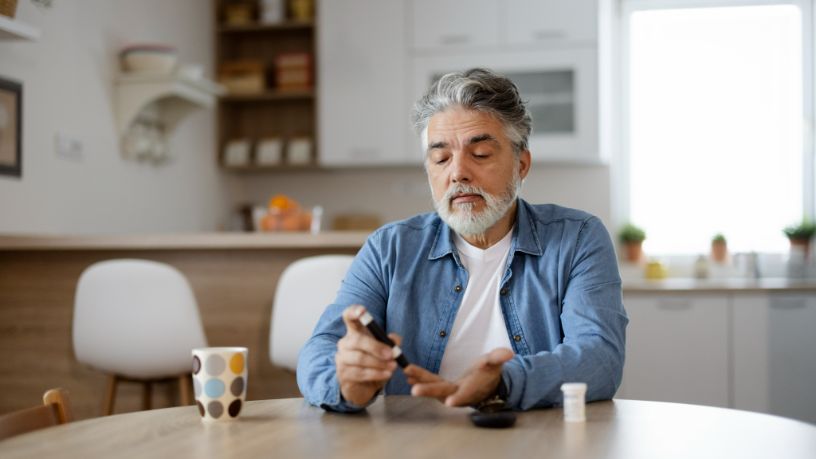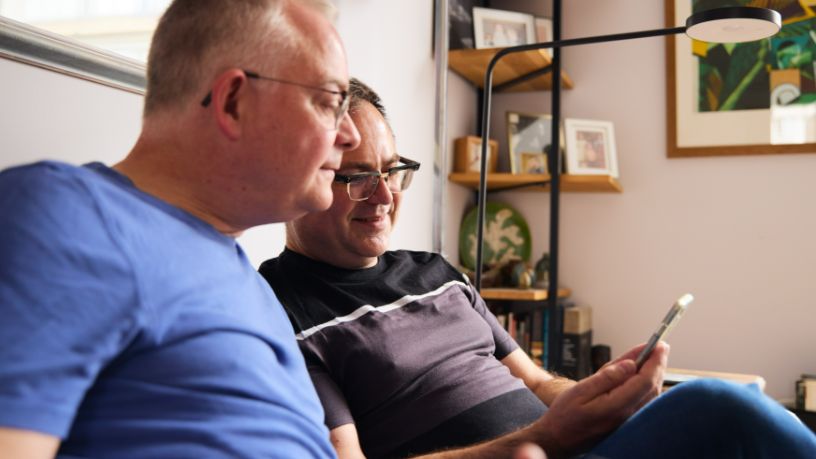Managing your diabetes doesn’t have to be a chore.
Key takeaways
With new routines, you can make testing easier today.
Discover 5 handy, everyday tips for testing your blood glucose levels.
When you’re diagnosed with diabetes, it can feel like life suddenly revolves around testing your blood glucose levels (BGLs).
While regular finger pricks or wearing a glucose monitoring device mightn’t be your idea of a good time, keeping your BGLs within your target range is an important part of managing diabetes.
Fluctuating BGLs (being either too high or too low) can put you at risk of serious complications down the track, or sudden and severe symptoms which, in extreme cases, can be deadly.1
It might be tempting to skip testing or monitoring because you’re feeling fine. But, unfortunately, it’s hard to get a full picture of your BGLs without actually checking them.
Here, we look at ways to help you take control of your diabetes with 5 helpful tips for setting up a testing routine.
1. Keep your equipment handy
Whether it’s on the kitchen bench, next to your toothbrush or near the kettle, keeping your testing kit somewhere handy can help with day-to-day diabetes management.
Depending on how often you need to test, think about whether you can link it to another routine, such as storing your kit next to the toaster so you can check your BGLs while you make breakfast.
Remember, when it comes to forming habits and routines, persistence is key. In fact, research suggests that it can take anywhere between 18 to 254 days for a new habit to become automatic.2
2. Take advantage of tech
Diabetes devices, apps and equipment can help make monitoring easier.
Possibly the easiest and most comprehensive way to monitor your BGLs around the clock is by using a ‘continuous glucose monitor’ (CGM). This small, wearable kit uses a sensor that’s inserted just under your skin, along with a receiver or smart phone app that alerts you if your BGLs are outside the healthy range.
3. Set a reminder system
If you’re struggling to stay on top of your testing, it can help to establish a reminder system that suits you.
This might be recurring phone alerts, a reminder app that sends you notifications throughout the day (such as the Glucose Blood Sugar Tracker app), a reminder system on your blood glucose meter or even sticky notes around the house.
4. Make testing more comfortable
If testing your BGLs is uncomfortable or painful, it can be hard to make it part of your daily routine.
To make testing more comfortable, you may try using a lancing device that is gentle. Likewise, you could warm your hands before testing to improve blood flow.
You might also think about changing your testing site, using other areas of your body like your forearm.
5. Celebrate your successes
Managing diabetes can be tough. So, it’s important keep track of your progress and celebrate your successes, no matter how small.
Whenever you test your BGLs, give yourself a pat on the back. Celebrating successes can keep you motivated and make testing more routine.
If you’re having ongoing trouble monitoring your BGLs, talk to your treating team or friends and family to see how they can help.
Resources
The National Diabetes Services Scheme (NDSS) Peer Support website offers support and information, including in-person and online diabetes peer groups.
Diabetes Australia has more information about continuous glucose monitors.

At Bupa, trust is everything
Our health and wellbeing information is regularly reviewed and maintained by a team of healthcare experts, to ensure its relevancy and accuracy. Everyone's health journey is unique and health outcomes vary from person to person.
This content is not a replacement for personalised and specific medical, healthcare, or other professional advice. If you have concerns about your health, see your doctor or other health professional.
1Diabetes Australia. (2019). What is diabetes. Diabetes Australia.
2 Lally, P., van Jaarsveld, C. H. M., Potts, H. W. W., & Wardle, J. (2019). How are habits formed: Modelling habit formation in the real world. European Journal of Social Psychology, 40(6), 998-1,009.
You might also like...
Your guide to insulin pumps
Staying on top of insulin levels can be hard, so an insulin pump may be the solution. Here’s everything you need to know about this life-saving technology.
6 tech solutions to manage your diabetes
Managing your diabetes doesn’t have to be hard. Discover 6 of the latest technology options that can help you
Your guide to managing type 2 diabetes
A type 2 diabetes diagnosis can be a confusing and emotional time, but learning how to manage your condition can make life easier. Follow this simple guide.
Diabetes 101: What are the different types?
Understanding the different types of diabetes is an important step in learning how to manage your health and preventing serious issues in the future.





